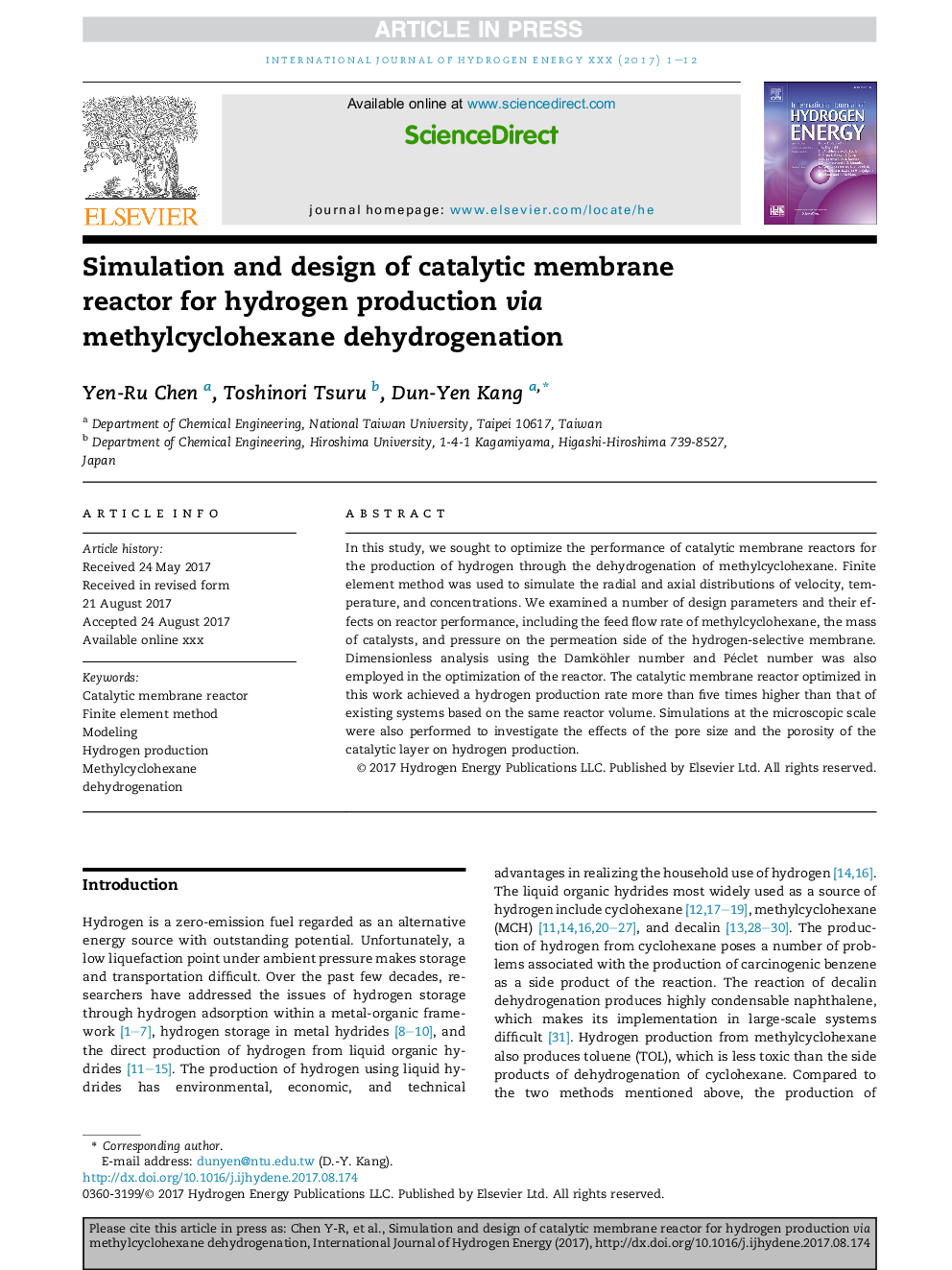| Article ID | Journal | Published Year | Pages | File Type |
|---|---|---|---|---|
| 5145065 | International Journal of Hydrogen Energy | 2017 | 12 Pages |
Abstract
In this study, we sought to optimize the performance of catalytic membrane reactors for the production of hydrogen through the dehydrogenation of methylcyclohexane. Finite element method was used to simulate the radial and axial distributions of velocity, temperature, and concentrations. We examined a number of design parameters and their effects on reactor performance, including the feed flow rate of methylcyclohexane, the mass of catalysts, and pressure on the permeation side of the hydrogen-selective membrane. Dimensionless analysis using the Damköhler number and Péclet number was also employed in the optimization of the reactor. The catalytic membrane reactor optimized in this work achieved a hydrogen production rate more than five times higher than that of existing systems based on the same reactor volume. Simulations at the microscopic scale were also performed to investigate the effects of the pore size and the porosity of the catalytic layer on hydrogen production.
Keywords
Related Topics
Physical Sciences and Engineering
Chemistry
Electrochemistry
Authors
Yen-Ru Chen, Toshinori Tsuru, Dun-Yen Kang,
